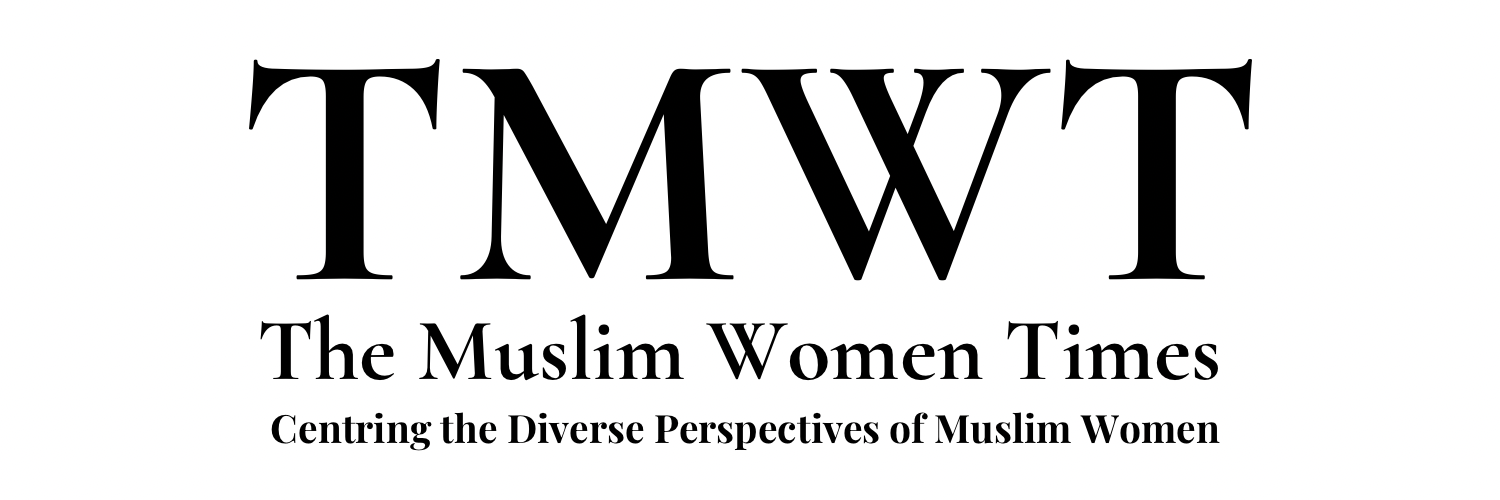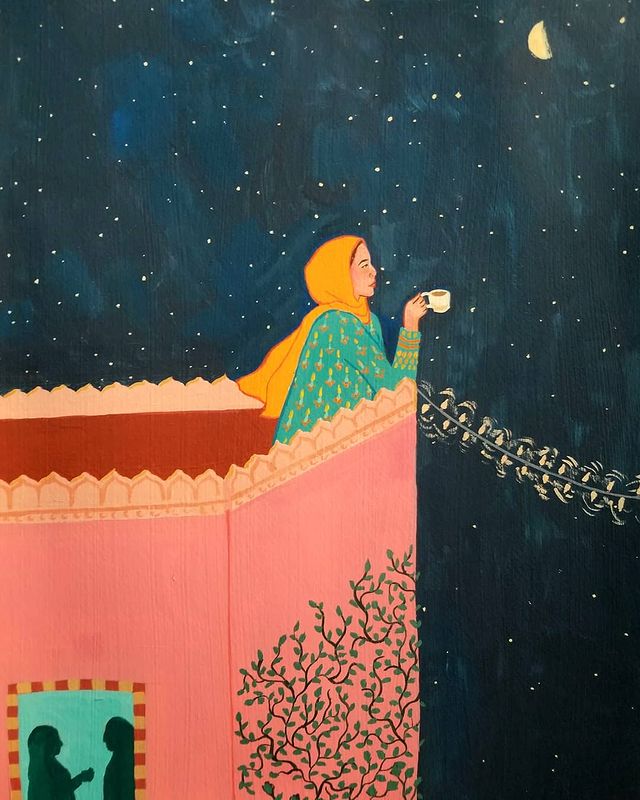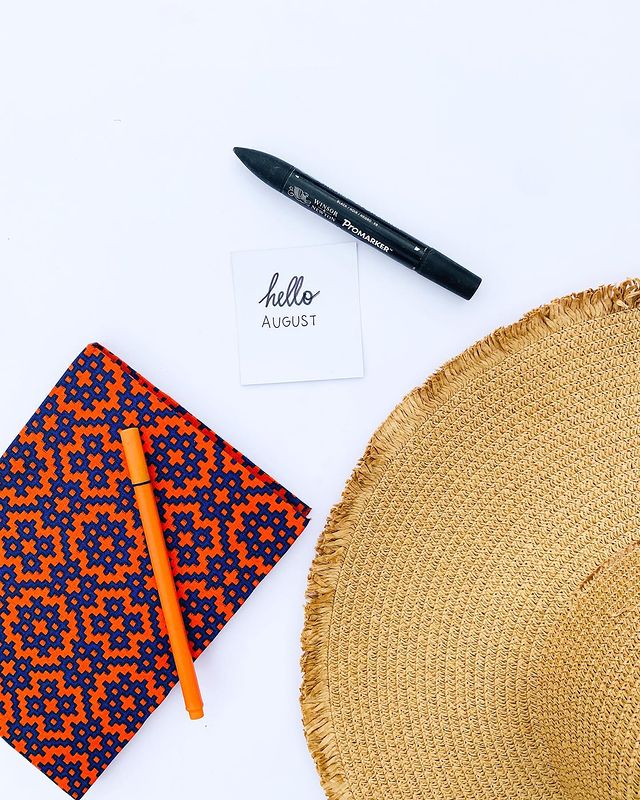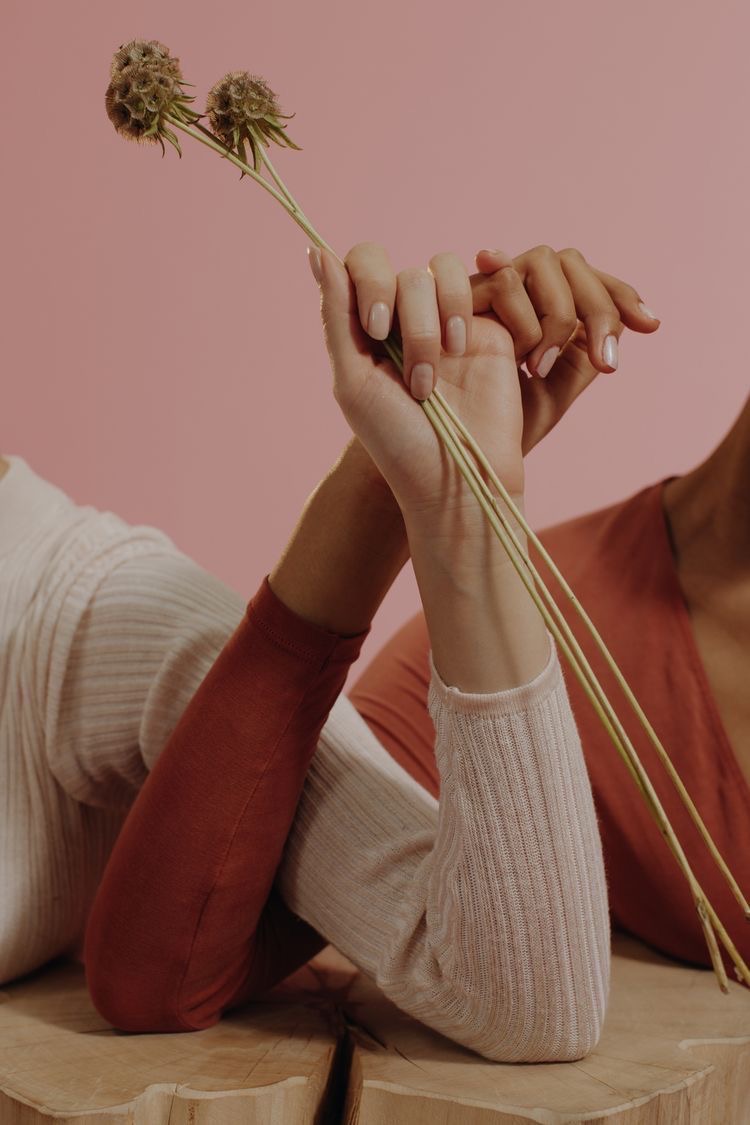“The Feature” is designed to bring attention and awareness to the amazing works that Muslim women are doing in the world, inspiring you to live your most brilliant lives. In conversation with Katie Haseeb, TMWT explored the intersection of Art, Empowerment and Spirituality.
When searching for empowerment projects, we most likely look at humanitarian initiatives, poverty alleviation schemes or vocational training. While it is difficult to define a concept as abstract as empowerment, it is refreshing to know that no singular definition has been pinned on this term, giving us a breathing space to work around it.
Very recently, we have been awed by the power of art to empower people and promote change. Art is a powerful tool, which offers new perspectives and allows for self-expression and growth. They are just as effective as any other means in projects focused on empowerment, documentation and initiatives that create opportunities for those harder to reach.
For centuries, successful women artists have been very active in contributing to the art scene. They have significantly contributed to the movements of art as empowerment, and have fought to see its transformative roles in society. In our quest to explore the intersection of art and empowerment, we came across Katie Haseeb, an artist exploring Islamic spirituality, tradition, and the experiences of being a Muslim woman.
Katie Haseeb is an artist living and working in Chicago, Illinois. She graduated from the Milwaukee Institute of Art and Design with a BFA with an emphasis in Painting in 2016. She has shown work in galleries in Milwaukee, Chicago, and her hometown of Rockford, Illinois. Haseeb explores themes of femininity, tradition, and Islamic spirituality in her paintings of Muslim women. The figures in Haseeb’s paintings partake in pastimes that seem idyllic and simple on the surface (painting, playing music, reading) yet often suggest tangible connections to a deeper spirituality.
Curious to learn more, TMWT sat in conversation with Katie Haseeb and here’s what she had to say.
TMWT: When did you first develop an interest in art and how long have you been working as an artist?
Katie Haseeb: I’ve been interested in art since I was a young child. I don’t remember a time when I didn’t love drawing and painting. I first considered fine art as a career path when I was in eighth grade and had a very supportive and encouraging art teacher. When I got to high school I took as many art electives as I could, and decided I wanted to go to college to study art, which is what I ended up doing. Since graduating from college in 2016, I’ve worked as a professional artist and educator. Although I consider myself an artist first and foremost, I’ve always worked other jobs to have a steady income and support myself financially. I currently work as a teacher at an Islamic school in Chicago, and I previously worked as an educator at the Milwaukee Art Museum in Milwaukee, Wisconsin.
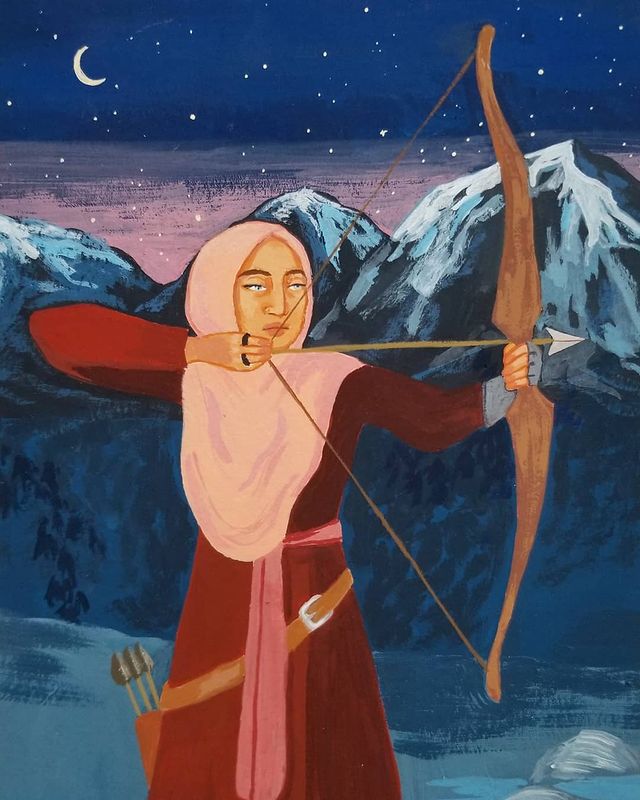
TMWT: Considering that it’s not a conventional career path, how easy was it to venture into it and did you have a mentor to guide you?
Katie Haseeb: Although art isn’t a very conventional career path, it was something I was determined to pursue from a fairly young age. I had the support of my parents and teachers, which was a huge deal. I knew it wasn’t the safest option when it came to making a career out of it, but I was stubbornly determined to study something I was passionate about. The only other subject that I felt similarly toward was English, which is also not a very lucrative field. So my first love, art, won out in the end.
When I attended the Milwaukee Institute of Art and Design for undergrad, I was taught and mentored by a number of incredible, dynamic artists and professors. Those professors allowed me to explore various ways of thinking, making, and painting. One of my painting professors actually encouraged me to incorporate my faith and spirituality into my paintings, which was something I really ran with. My time in college also exposed me to various careers in the arts, which is how I came to work at an art museum after graduating.
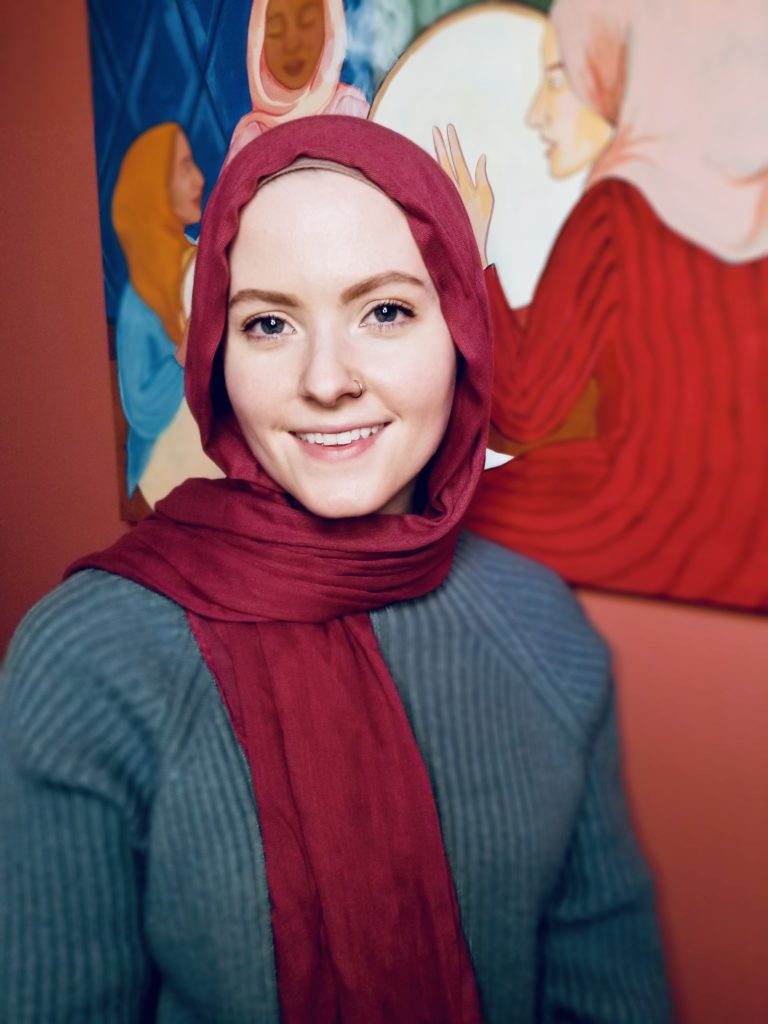
Muslim women telling our own stories is empowering and necessary since we’re all aware of the perverse misrepresentations that can occur when our stories are told by others. – Katie Haseeb
TMWT: You have mentioned that your art explores Islamic spirituality, tradition and the experiences of being a Muslim woman. In what ways do you think that art can be empowering to Muslim women.
Katie Haseeb: Visual art is an incredibly powerful storytelling medium. A work of art tells a story about the person who made it. Muslim women telling our own stories is empowering and necessary since we’re all aware of the perverse misrepresentations that can occur when our stories are told by others. If you look at the great cultures and societies throughout the history of the Islamic tradition, you will find a strong history of artists, craftspeople, and distinct artistic styles. Not only is it empowering and uplifting for us to connect to that history, but the presence of art and artists is crucial to sustainable, thriving Muslim communities in the West. Art that is distinctly Muslim and distinctly American is needed for Muslims to have a meaningful and lasting cultural impact in the United States and is a testament to the truth and universality of Islam.
One of my painting professors actually encouraged me to incorporate my faith and spirituality into my paintings, which was something I really ran with
– Katie Haseeb
TMWT: What is the most interesting art project you have worked on so far?
Katie Haseeb: One that comes to mind is a series of illustrations I made for the Hikam of Ibn Ata Allah. The Hikam is an incredible work, comprised of powerful spiritual aphorisms. I chose several that resonated with me and created pen and ink illustrations of the imagery that they evoked.
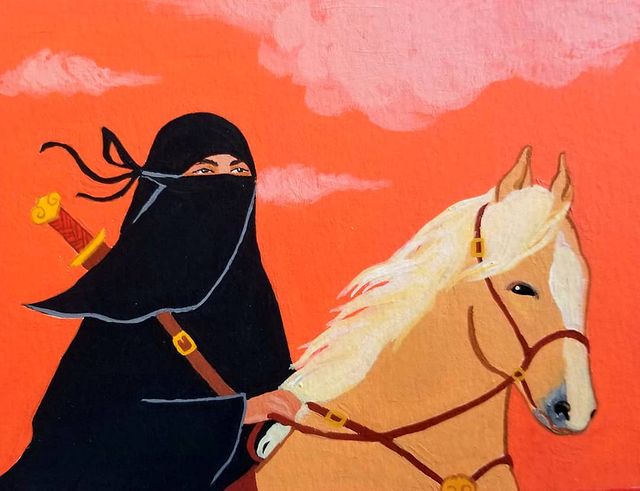
TMWT: What has been the most challenging art project you have worked on?
Katie Haseeb: The most challenging art project I’ve worked on was probably a recent commission. It was a large watercolor painting of the client’s toddler and infant sons. Drawing babies and children is so different from drawing adults, so the perspective, proportions, and scale of the painting was pretty challenging.
TMWT: What are your plans for the future with your work?
Katie Haseeb: I definitely want to make more work. My day job is pretty demanding, so I don’t have as much time as I’d like to devote to art. I want to keep exploring and keep growing as an artist. One of my goals is to draw and paint more freely– to think less about process and stylistic choices, and to just get the work out into the world. As soon as it’s safe to do so I’d like to show my work in gallery shows again. I’d also like to grow my online presence, and hopefully be able to sell paintings and prints through that.
TMWT: What is your advice for any young woman who wants to follow your path?
Katie Haseeb: My advice would be to follow your passion where it takes you. You may or may not make a lot of money as an artist. Both are okay- your worth is not tied to a prestigious career or how much money you make. Your success as an artist is not tied to a paycheck. There’s no shame in working a job to financially support yourself and having art be your side gig. There’s no shame in having art as your main gig. Choose the path that works for you, and always put your full trust in Allah.
If you’d love to purchase some of Katie Haseeb’s work, make sure to visit her store.
